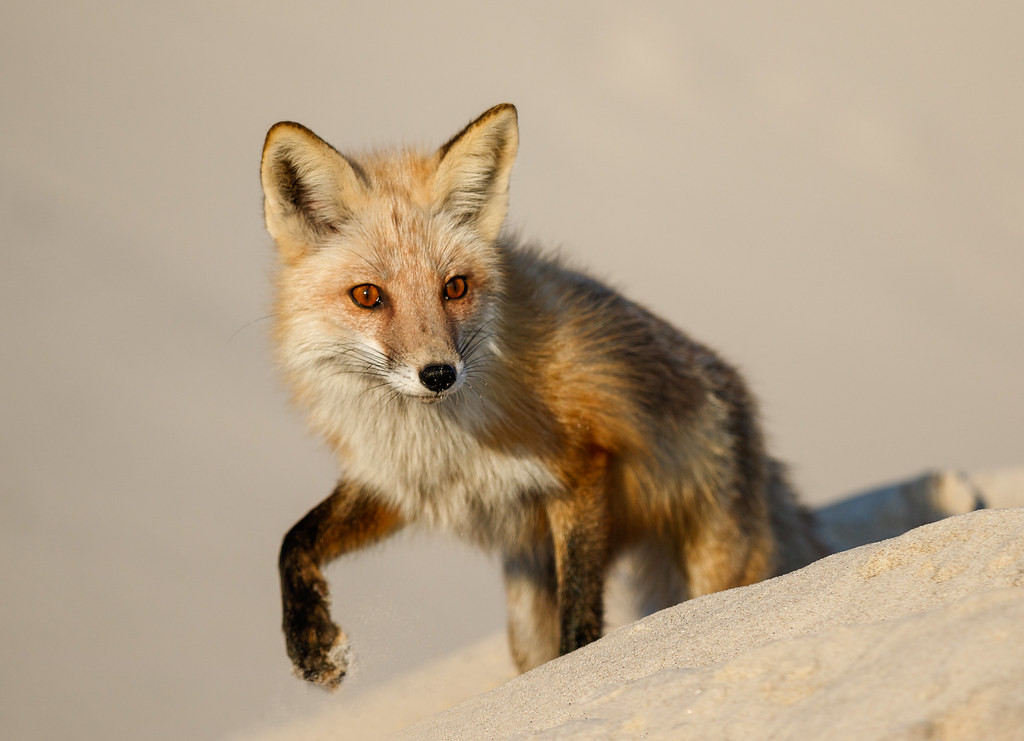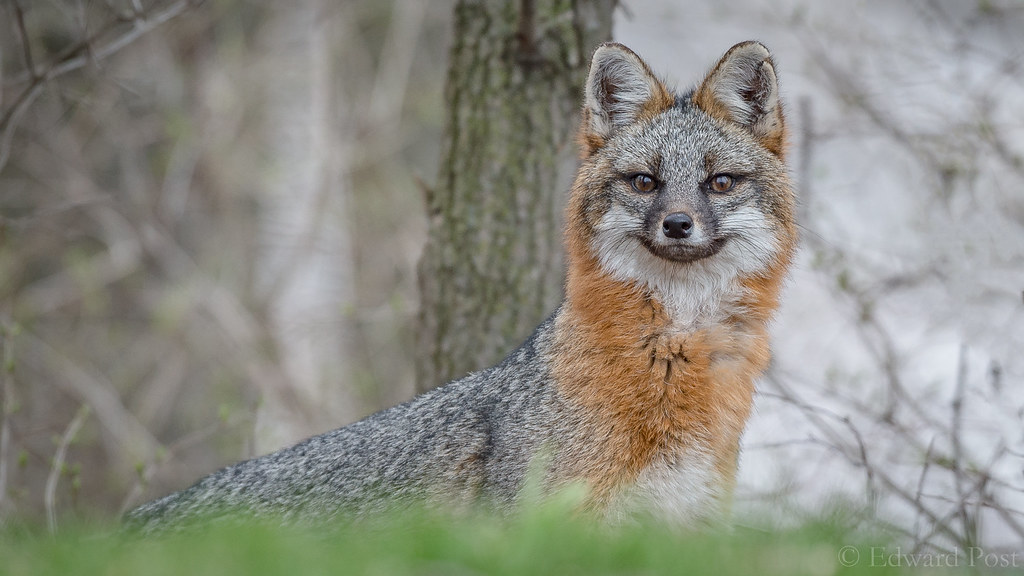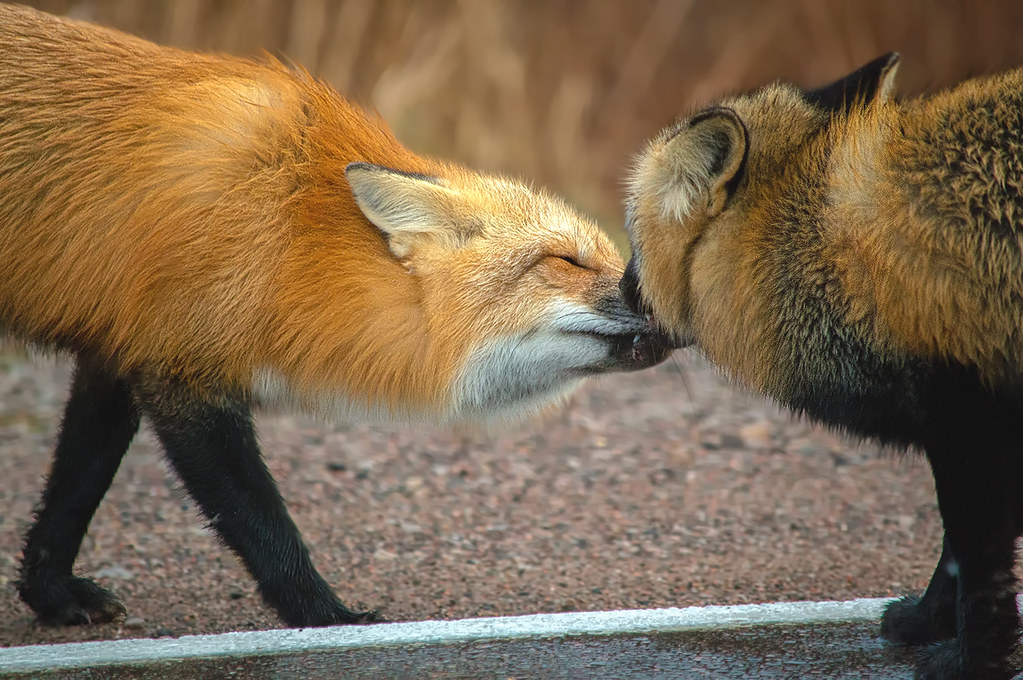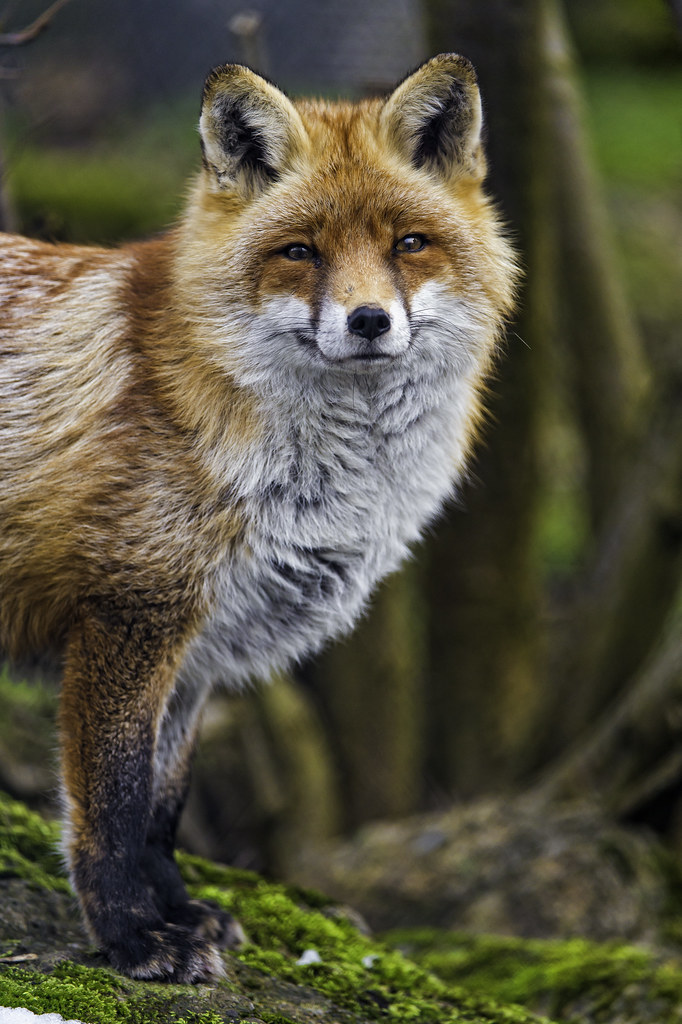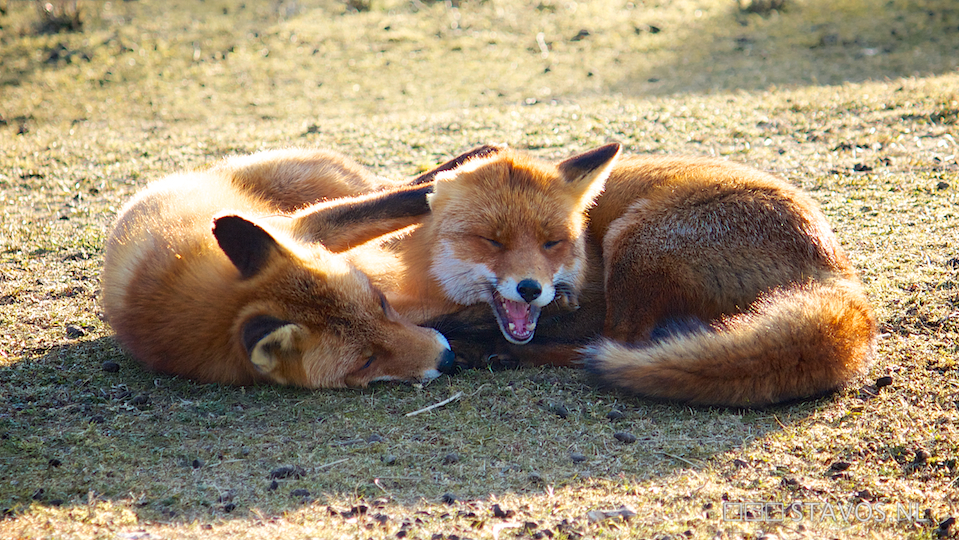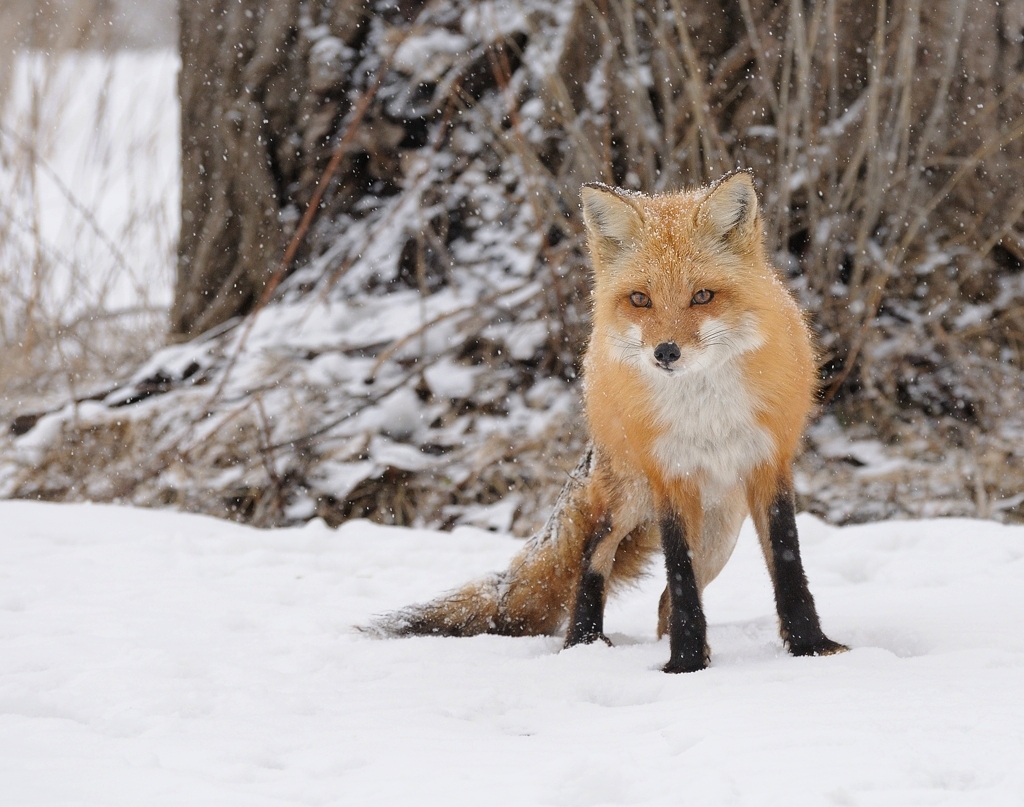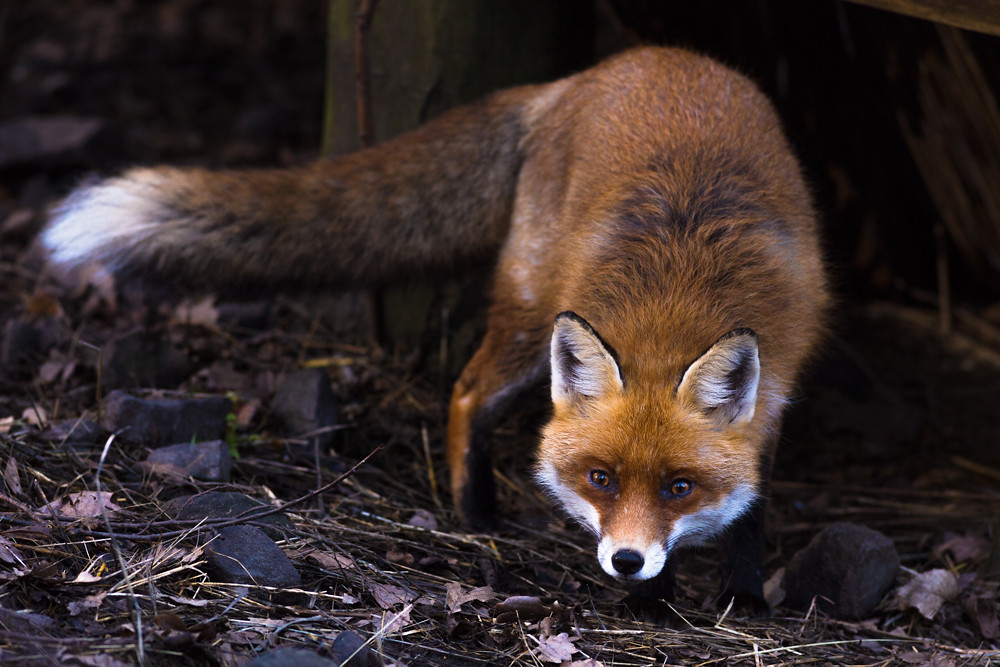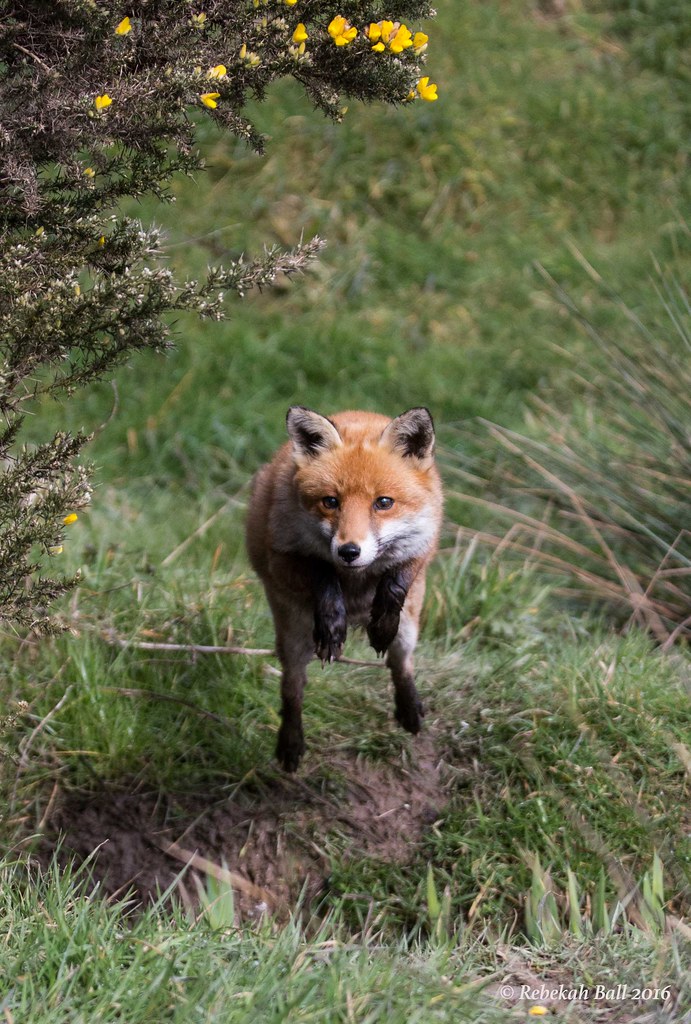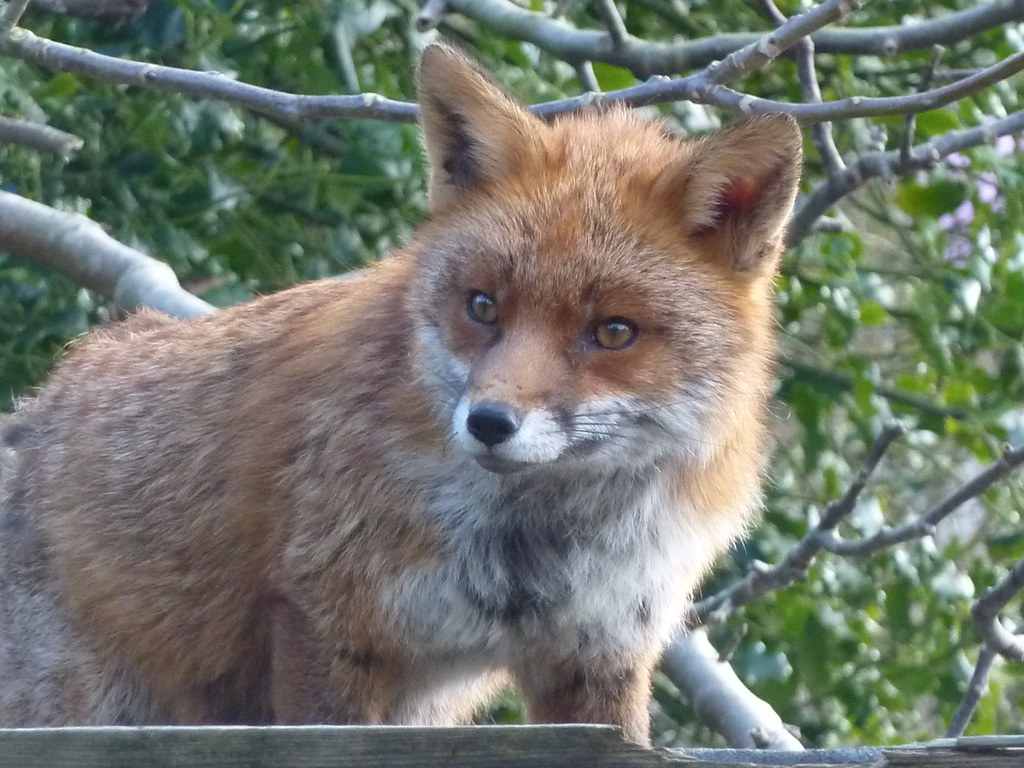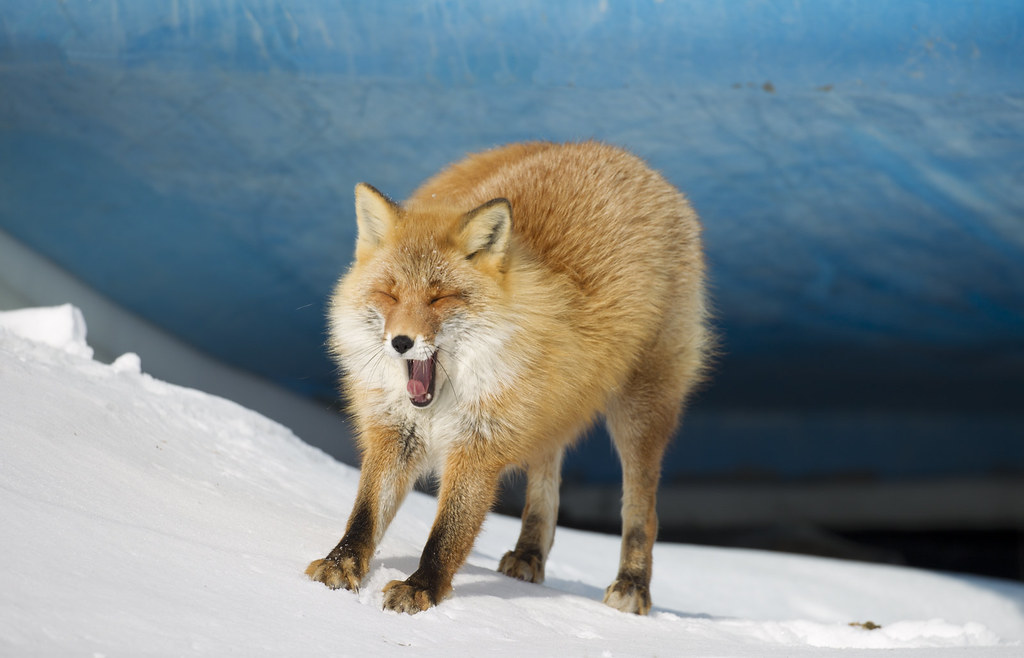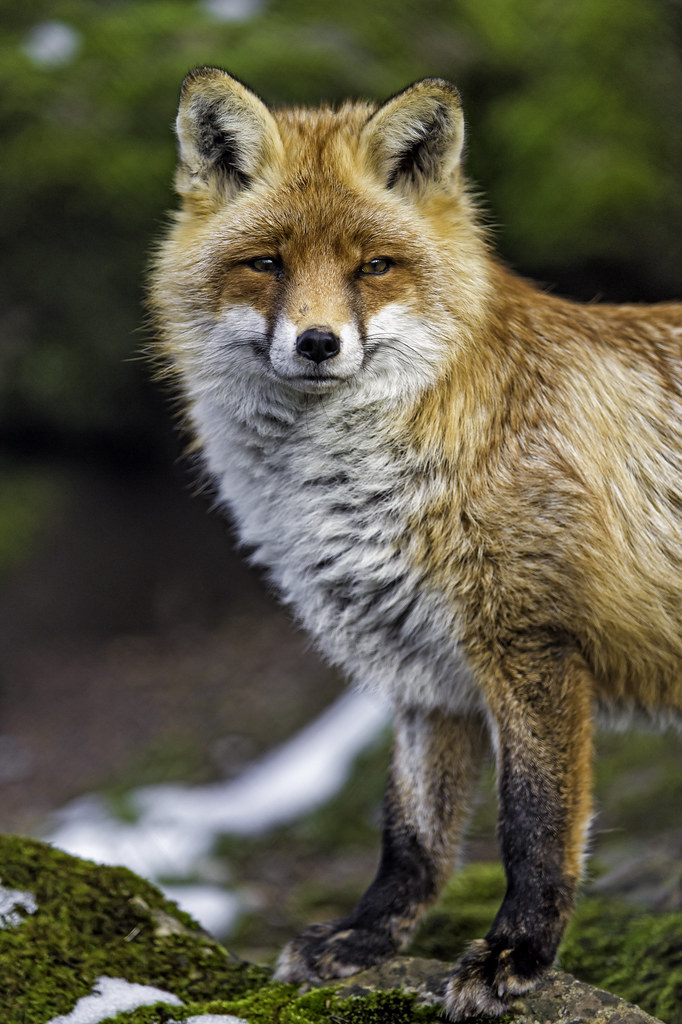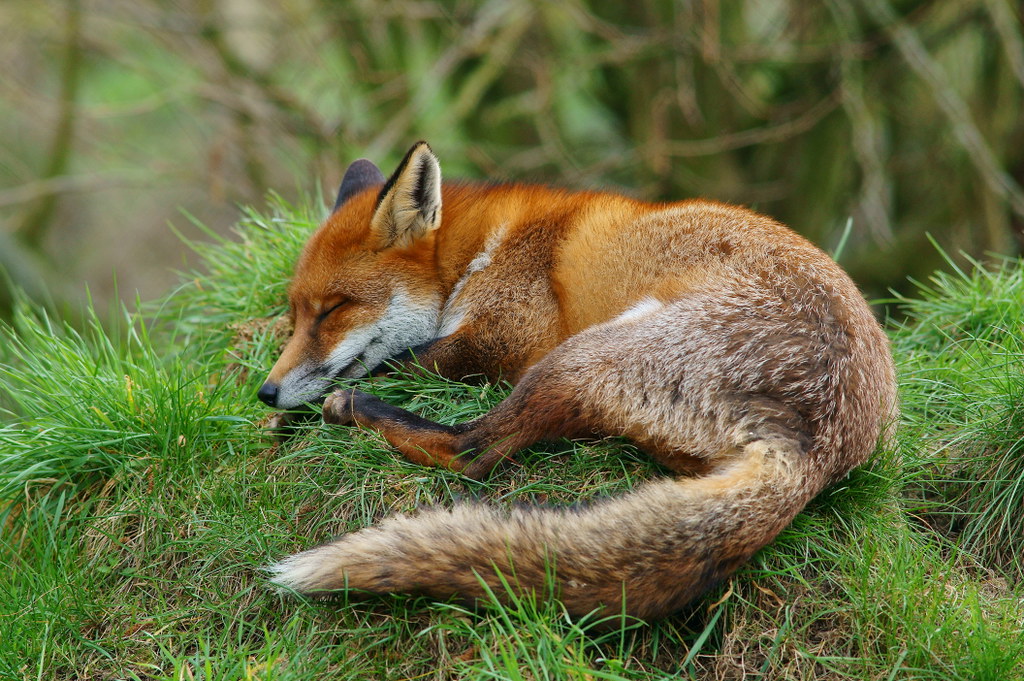
Thursday, March 31, 2016
Fox Escapes Breeder To Meet Her Soulmate
By Zainab Akande
Storm, the fox, found the best friend a girl could ask for — in one dapper gentleman of a red fox named Jade. As
for Jade, Storm's company was exactly what he was missing all along —
he had somehow never met another fox in his entire adult life.

Alaska Wildlife Conservation Center/Doug Lindstrand
Jade was brought to the Alaska Wildlife Conservation Center (AWCC) over two years ago after someone tried to illegally keep him as a pet, Scott Michaelis, a staffer at the AWCC, told The Dodo. Up until Storm's arrival, the 3-year-old had no other foxes like himself to interact with, though the center did its best to make up for it with forms of animal enrichment and human interaction.
Storm, on the other hand, was rescued from an illegal breeder in Montana.

Alaska Wildlife Conservation Center/Chandelle Cotter
As for Jade, he's finally able to indulge in the type of companionship that would have been afforded to him had he been left free and wild to begin with.

Storm and Jade "boxing," one of their favorite games to play with each other.Alaska Wildlife Conservation Center/Chandelle Cotter
"Red foxes are known to maintain a number of relationships in the wild," a press release from the center about Storm's arrival said. "The addition of Storm onto campus will be a mutually beneficial relationship and form of enrichment for both [Jade and Storm]."

Alaska Wildlife Conservation Center/Chandelle Cotter
It seems Jade and Storm both find their budding friendship to be pretty awesome as well. The two hit it off right after meeting for the first time.


Mar. 28, 2016

Jade was brought to the Alaska Wildlife Conservation Center (AWCC) over two years ago after someone tried to illegally keep him as a pet, Scott Michaelis, a staffer at the AWCC, told The Dodo. Up until Storm's arrival, the 3-year-old had no other foxes like himself to interact with, though the center did its best to make up for it with forms of animal enrichment and human interaction.
Storm, on the other hand, was rescued from an illegal breeder in Montana.

Had
she not been found, she more than likely would have been forced to live
as a household pet. The coloring of a marble fox in particular does not occur naturally in the wild
and is a result of human meddling. These foxes are typically bred to be
kept as pets or to be used in the fur trade. In Storm's case, she was
lucky to be spared from either outcome.
As for Jade, he's finally able to indulge in the type of companionship that would have been afforded to him had he been left free and wild to begin with.

"Red foxes are known to maintain a number of relationships in the wild," a press release from the center about Storm's arrival said. "The addition of Storm onto campus will be a mutually beneficial relationship and form of enrichment for both [Jade and Storm]."

It seems Jade and Storm both find their budding friendship to be pretty awesome as well. The two hit it off right after meeting for the first time.

Watch some more of their first interactions below:
Wednesday, March 30, 2016
Tuesday, March 29, 2016
Lawrence of Arabia, eat your heart out
Monday, March 28, 2016
Did you say "a mouse?" WHERE!??
Sunday, March 27, 2016
I make "sly" sound good-really good
Saturday, March 26, 2016
Friday, March 25, 2016
A Finally Friday Fox
Thursday, March 24, 2016
How do you like my new bathing suit?
Wednesday, March 23, 2016
National Zoo’s Fennec Fox Kits Have Names
March 21, 2016
The Smithsonian's National Zoo welcomed two Fennec Fox kits to their Small Mammal House February 4! The male and female were born to seven-year old mother Daisy and two-year-old father Charlie.
At her previous Zoo, Daisy had little success raising her own babies. Because of her valued genetics, the National Zoo received the recommendation, from the Association of Zoos and Aquariums' Species Survival Plan, to breed Daisy with Charlie.
Prior to Daisy's pregnancy, Small Mammal House keepers teamed up with Zoo veterinarians and nutritionists to create a kit care plan. National Zoo staff anticipated having to hand-rear any new kits born to Daisy, so they began work on a nursery in the Small Mammal House. As soon as the babies were born, they were removed them from the exhibit and placed in the incubator to regulate and monitor their body temperature.
The National Zoo’s nutrition team developed a formula made of Esbilac (puppy milk replacer) and KMR (kitten milk replacer) to simulate the composition of a fox mother's milk. Initially, the kits were fed every two hours for their first ten days. As the kits grew stronger, feedings were reduced to every two hours (beginning at 6 a.m. and ending at midnight).
The six-week-old Fennec Fox kits now have names! The male has been dubbed Teddy (short for Theodore) and the female has been named Hokees (“my love” in Armenian). The kits are now transitioning to solid foods, including beef, vegetables (broccoli, cauliflower, sweet potato, carrot, corn, beans, squash), fruits (apple, banana), wax worms, and kibble. Little Hokees appears to enjoy the addition of veggies to her diet.
Fans of the Fennec Fox siblings can keep up-to-date on their progress via the National Zoo's social media and web pages.
The Fennec Fox is a small nocturnal fox that is native to the Sahara of North Africa. It is the smallest species of canid in the world. Their coat, ears, and kidney functions have adapted to high-temperature, low-water, and desert environments.
The large ears are indeed indicative of heightened auditory abilities. Its hearing is sensitive enough to hear prey moving underground. The Fennec Fox eats mainly insects, small mammals and birds.
Fennec Foxes mate for life, with each pair, or family, controlling their own territory. The species usually breed only once each year. Following mating, the male is known to become very aggressive and protective of the female, providing her with food during her pregnancy and lactation periods. Gestation usually lasts between 50 to 52 days. The typical litter is between one and four kits, with weaning taking place at around 70 days. When born, the kit’s ears are folded over and its eyes are closed. The eyes open at around ten days old, and the ears lift soon afterwards. The captive lifespan of a Fennec Fox has been recorded at up to 14 years.
The Fennec Fox is classified as “Least Concern” on the IUCN Red List. Their fur is prized by the indigenous peoples of North Africa, and in many parts of the world, the animal is considered an exotic pet.

The Smithsonian's National Zoo welcomed two Fennec Fox kits to their Small Mammal House February 4! The male and female were born to seven-year old mother Daisy and two-year-old father Charlie.
At her previous Zoo, Daisy had little success raising her own babies. Because of her valued genetics, the National Zoo received the recommendation, from the Association of Zoos and Aquariums' Species Survival Plan, to breed Daisy with Charlie.
Prior to Daisy's pregnancy, Small Mammal House keepers teamed up with Zoo veterinarians and nutritionists to create a kit care plan. National Zoo staff anticipated having to hand-rear any new kits born to Daisy, so they began work on a nursery in the Small Mammal House. As soon as the babies were born, they were removed them from the exhibit and placed in the incubator to regulate and monitor their body temperature.
The National Zoo’s nutrition team developed a formula made of Esbilac (puppy milk replacer) and KMR (kitten milk replacer) to simulate the composition of a fox mother's milk. Initially, the kits were fed every two hours for their first ten days. As the kits grew stronger, feedings were reduced to every two hours (beginning at 6 a.m. and ending at midnight).
The six-week-old Fennec Fox kits now have names! The male has been dubbed Teddy (short for Theodore) and the female has been named Hokees (“my love” in Armenian). The kits are now transitioning to solid foods, including beef, vegetables (broccoli, cauliflower, sweet potato, carrot, corn, beans, squash), fruits (apple, banana), wax worms, and kibble. Little Hokees appears to enjoy the addition of veggies to her diet.
Photo Credits: Smithsonian's National Zoo
The Fennec Fox is a small nocturnal fox that is native to the Sahara of North Africa. It is the smallest species of canid in the world. Their coat, ears, and kidney functions have adapted to high-temperature, low-water, and desert environments.
The large ears are indeed indicative of heightened auditory abilities. Its hearing is sensitive enough to hear prey moving underground. The Fennec Fox eats mainly insects, small mammals and birds.
Fennec Foxes mate for life, with each pair, or family, controlling their own territory. The species usually breed only once each year. Following mating, the male is known to become very aggressive and protective of the female, providing her with food during her pregnancy and lactation periods. Gestation usually lasts between 50 to 52 days. The typical litter is between one and four kits, with weaning taking place at around 70 days. When born, the kit’s ears are folded over and its eyes are closed. The eyes open at around ten days old, and the ears lift soon afterwards. The captive lifespan of a Fennec Fox has been recorded at up to 14 years.
The Fennec Fox is classified as “Least Concern” on the IUCN Red List. Their fur is prized by the indigenous peoples of North Africa, and in many parts of the world, the animal is considered an exotic pet.
Tuesday, March 22, 2016
"Vole pizza" tonight, kids?
Channel Island foxes may need genetic rescue
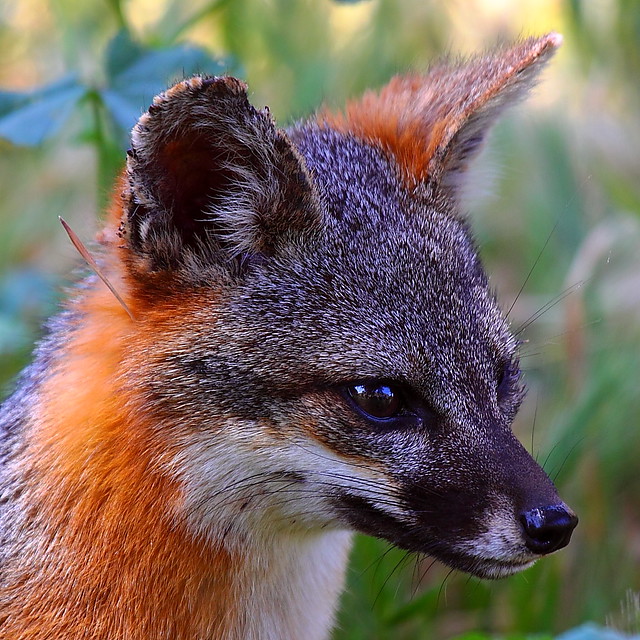
- Date:
- March 21, 2016
- Source:
- Colorado State University
- Summary:
- The island fox has made a remarkable comeback from the brink of extinction, with three of six populations on their way to becoming the fastest mammal recovered under the Endangered Species Act. But new research uncovers a hidden danger to the future viability of some island fox populations.
The island fox has made a remarkable
comeback from the brink of extinction, with three of six populations on
their way to becoming the fastest mammal recovered under the Endangered
Species Act. But new research published online March 17 in Molecular Ecology uncovers a hidden danger to the future viability of some island fox populations.
Chris Funk, associate professor in the College of Natural Sciences'
Department of Biology, led the research team that conducted the largest
and most in-depth genetic study to date of California Channel Island
foxes. Funk is also director of the SoGES (School of Global
Environmental Sustainability) Global Biodiversity Center at CSU. The
study confirmed that each island's fox population likely warrants
designation as a unique subspecies. But it also found that one
subspecies, on San Nicolas Island, may require genetic rescue to reduce
its risk of extinction.
The San Nicolas Island fox has the lowest genetic variation ever found in a mammal species, making them especially vulnerable. "Low genetic diversity may lead to lower survival and reproductive success, and may reduce the ability of a population to adapt to climate change or new, introduced diseases," Funk said. "With a dwindling population of fewer than 300 adults, actions need to be taken quickly to preserve this important member of the Channel Islands ecosystem."
The scientists say that if this subspecies' genetic health is poor, it may be necessary to use "genetic rescue," bringing island fox individuals from other islands to boost the San Nicolas gene pool. This approach has been successfully implemented in the past to save populations from extinction, including the resuscitation of the Florida panther back in 1995.
The island fox is the smallest fox species in the U.S and found on six of the eight California Channel Islands. Four of the six fox subspecies (not including the San Nicolas population) were listed as endangered under the U.S. Endangered Species Act in 2004 due to precipitous population declines caused by predation by golden eagles and an epidemic of canine distemper virus. Since then, concerted efforts by various island managers enabled island fox numbers to recover sufficiently that the U.S. Fish & Wildlife Service plans to remove or move them down the list.
"The recent island fox recovery was the result of an impressive collaboration of scientists and land managers. It may now be time to examine whether unconventional methods like genetic rescue are needed for the San Nicolas Island fox," said Scott Morrison, The Nature Conservancy's director of science and a coauthor of the study.
If managers decide that genetic rescue is necessary to maintain robust populations of island foxes, this study can be used to inform which island fox subspecies would be the best source population.
Robert Lovich, a U.S. Navy biologist in California and a coauthor of the study, said: "Long-term monitoring of the island fox and new genomic technologies now give us the capacity for proactive management with far greater precision and a better expected outcome for island foxes in general."
The San Nicolas Island fox has the lowest genetic variation ever found in a mammal species, making them especially vulnerable. "Low genetic diversity may lead to lower survival and reproductive success, and may reduce the ability of a population to adapt to climate change or new, introduced diseases," Funk said. "With a dwindling population of fewer than 300 adults, actions need to be taken quickly to preserve this important member of the Channel Islands ecosystem."
The scientists say that if this subspecies' genetic health is poor, it may be necessary to use "genetic rescue," bringing island fox individuals from other islands to boost the San Nicolas gene pool. This approach has been successfully implemented in the past to save populations from extinction, including the resuscitation of the Florida panther back in 1995.
The island fox is the smallest fox species in the U.S and found on six of the eight California Channel Islands. Four of the six fox subspecies (not including the San Nicolas population) were listed as endangered under the U.S. Endangered Species Act in 2004 due to precipitous population declines caused by predation by golden eagles and an epidemic of canine distemper virus. Since then, concerted efforts by various island managers enabled island fox numbers to recover sufficiently that the U.S. Fish & Wildlife Service plans to remove or move them down the list.
"The recent island fox recovery was the result of an impressive collaboration of scientists and land managers. It may now be time to examine whether unconventional methods like genetic rescue are needed for the San Nicolas Island fox," said Scott Morrison, The Nature Conservancy's director of science and a coauthor of the study.
If managers decide that genetic rescue is necessary to maintain robust populations of island foxes, this study can be used to inform which island fox subspecies would be the best source population.
Robert Lovich, a U.S. Navy biologist in California and a coauthor of the study, said: "Long-term monitoring of the island fox and new genomic technologies now give us the capacity for proactive management with far greater precision and a better expected outcome for island foxes in general."
Story Source:
The above post is reprinted from materials provided by Colorado State University. Note: Materials may be edited for content and length.
The above post is reprinted from materials provided by Colorado State University. Note: Materials may be edited for content and length.
Journal Reference:
- W. Chris Funk, Robert E. Lovich, Paul A. Hohenlohe, Courtney A. Hofman, Scott A. Morrison, T. Scott Sillett, Cameron K. Ghalambor, Jesus E. Maldonado, Torben C. Rick, Mitch D. Day, Nicholas R. Polato, Sarah W. Fitzpatrick, Timothy J. Coonan, Kevin R. Crooks, Adam Dillon, David K. Garcelon, Julie L. King, Christina L. Boser, Nicholas Gould, William F. Andelt. Adaptive divergence despite strong genetic drift: genomic analysis of the evolutionary mechanisms causing genetic differentiation in the island fox (Urocyon littoralis). Molecular Ecology, 2016; DOI: 10.1111/mec.13605
Colorado
State University. "Island foxes may need genetic rescue." ScienceDaily.
ScienceDaily, 21 March 2016.
<www.sciencedaily.com/releases/2016/03/160321110458.htm>.
Santa Cruz Island Fox, Channel Islands National Park by I-Ting Chiang
Monday, March 21, 2016
Hey! What happened to Spring?
Sunday, March 20, 2016
Saturday, March 19, 2016
Friday, March 18, 2016
Thursday, March 17, 2016
Adorable Arctic fox giggles when he's sleepy (video)
Wednesday, March 16, 2016
Dad and kit on first day of cool school
Tuesday, March 15, 2016
From my point of view...
Monday, March 14, 2016
100% Pure Vixen... and that's not a bad thing
Subscribe to:
Posts (Atom)

